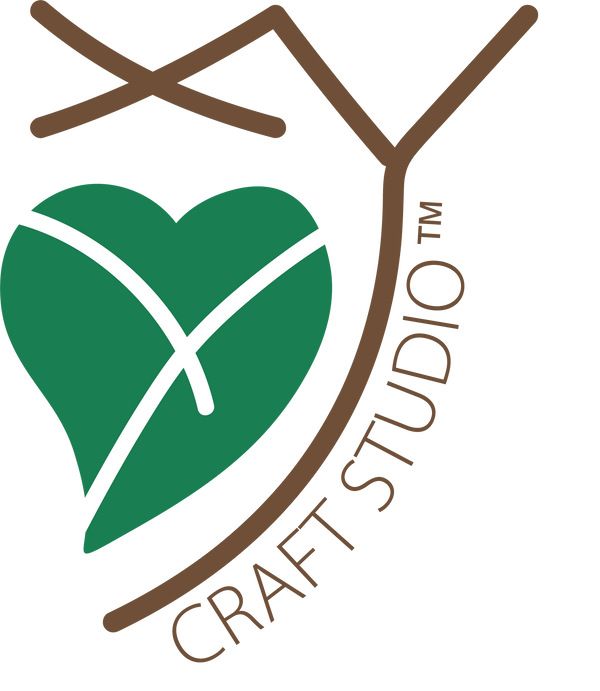A Simple Stitch Marker Holder Crochet Pattern
Nora XuCrochet Beginner’s Guide 16
You made it! Thank you for following along with our Crochet Beginner’s Guide. Now, let’s make something together!
Once you’ve gathered all the materials and tools, you can get started by reading the written pattern below. If you need a little more guidance interpreting the pattern, you can follow the video tutorial below, which guides you row by row.
In addition, the video tutorial introduces crochet terms such as “right side” vs. “wrong side.” It also demonstrates a method for counting the number of rows.
Materials and Tools
Yarn and hook:
This project can be made with any yarn of your choice and a corresponding-size hook. A 5.5 mm crochet hook and size 5 (bulky) yarn is used in the video demonstration.
Here are two recommended combinations:
- Lion Brand Lazy Days Yarn with a 5.0 mm crochet hook
- Lion Brand 24/7 Cotton Yarn with a 3.5 mm or 4.0 mm crochet hook
Accessories:
- 2 stitch markers
- 1 yarn needle
- 1 pair of scissors
- 1 button
- 2 beads (with a center hole large enough for your yarn needle)
Crochet Abbreviations (in US terms):
- Chain Stitch: ch
- Half Double Crochet Stitch: hdc
Crochet Pattern:

18 ch to form the foundation chain

Row 1 (17): Starting from the third ch from the hook (the first 2 ch count as a hdc), 16 hdc.

Row 2 (17): Turn, 2 ch (counts as a hdc), 16 hdc

Rows 3–7 (17): Repeat Row 2

After finishing Row 7, continue to make 50 ch.
Try to measure the chain formed by the 50 ch to see if it is approximately twice the length of the rectangular piece we’ve made. It’s better to have a longer chain than you need on this step.

Fasten off the yarn.

Placing the chain.
The following steps are a bit wordy, so you can refer to the video tutorial if you need visual guidance. What if a pattern doesn’t come with a video tutorial? Don’t worry: in my PDF patterns, I always include at least detailed, step-by-step guiding images.
- Hold the piece so that the chain formed by the 50 ch is on the top right. Near the left edge of the piece, you can see two holes around the center. Let’s name the top hole “Gap 1” and the bottom hole “Gap 2.”
- Bring the chain first through Gap 1. Don’t pull the chain too tight.
- Fold the left edge of piece toward the right edge.
- Make a small vertical loop by bringing the chain through Gap 2 to what’s now the inside of your folded piece. This vertical loop will be used as a “buttonhole.”
- Adjust the tension of the chain so the folded piece can open flat and the chain can cross the piece without stretching or being too loose. Now, you have the shape of the holder.

Add a button and beads:
With the piece folded and the chain hanging down from the right edge, wrap the chain around the holder from the back to front, and check if the final chain stitch is in approximately the same place as the “buttonhole.” If so, attach the button to the final stitch on the chain. (If not, undo a few chain stitches so the final chain stitch is in the same place as the “buttonhole.”) Tie a knot to secure the button. Then, thread the tail through two beads. Make a knot to secure the beads. Leave a small length after the knot. Then, cut the extra yarn.
If you don’t have beads or buttons, you can make your chain a bit longer so the final stitch go beyond where the “buttonhole” is. Then, after folding the piece in half and wrapping the chain around, you can tuck the remaining end of the chain through the “buttonhole” (as shown in the image below).


Weave in the starting end.

A simple stitch marker holder is finished.
Below is a video tutorial about
making a simple stitch marker holder.
-----------------------
This crochet beginner’s guide, including the step-by-step instructions, photographs, videos, logos, and text, are intended for personal use only and may not be used for any other purpose. You may not make, share, sell, distribute, or publicize (nor cause any such actions to be taken with regard to) any tutorials, demonstrations, lessons, or other guides, in any format for any purpose, that reference or replicate XY Craft Studio’s beginner’s guides, patterns, photographs, videos, or text, in whole or in part.
If you would like to share this beginner’s guide with others, you can share a link to this page.
-----------------------
